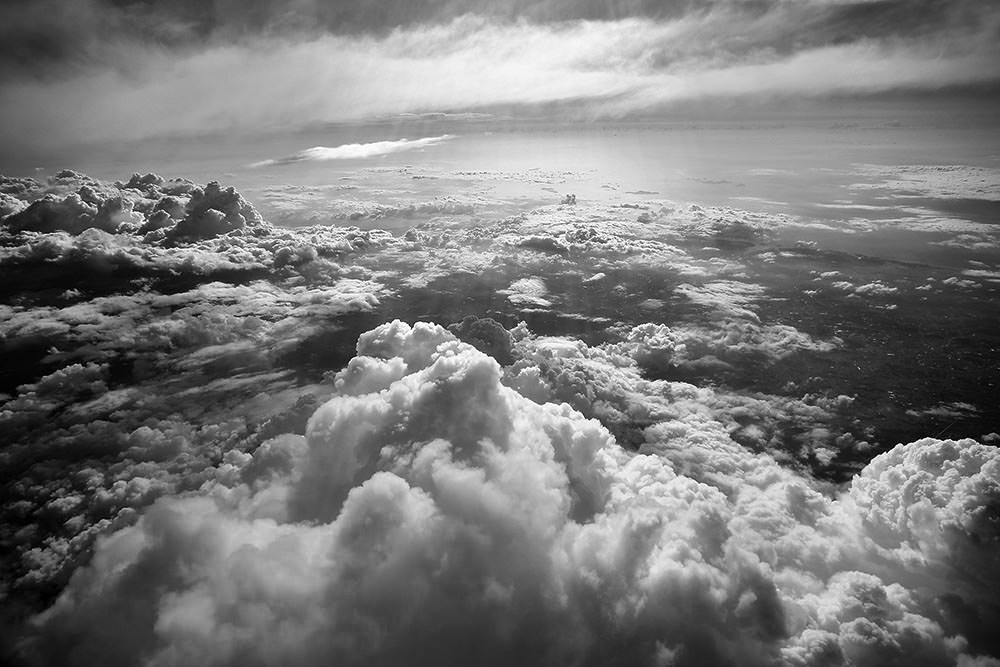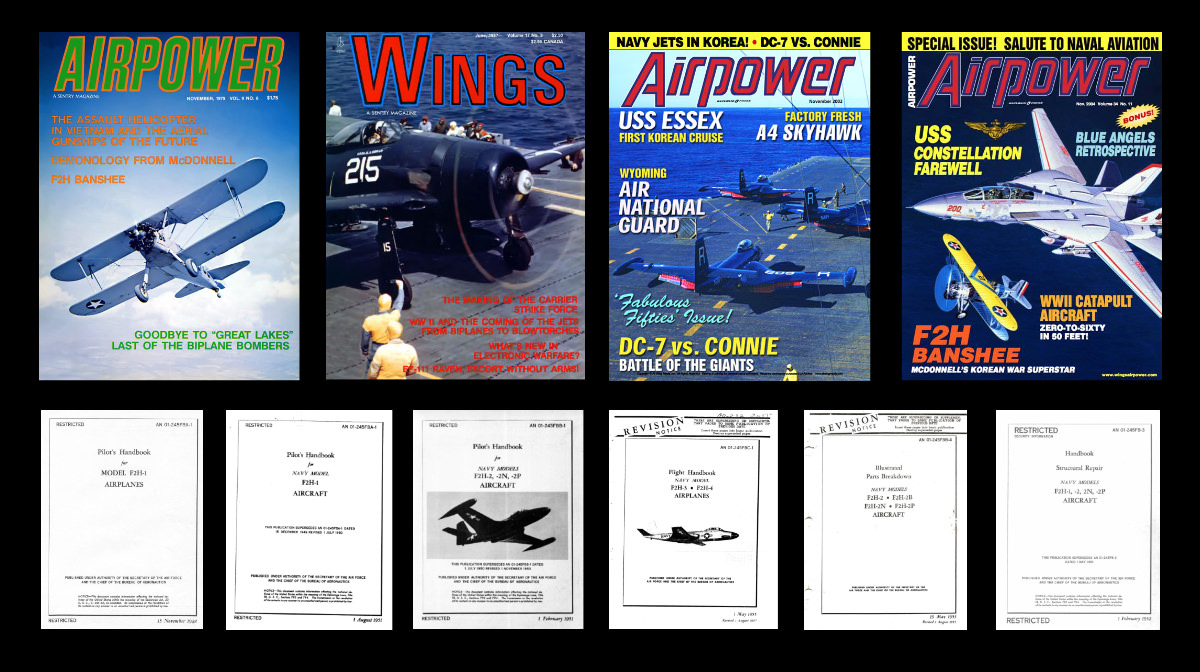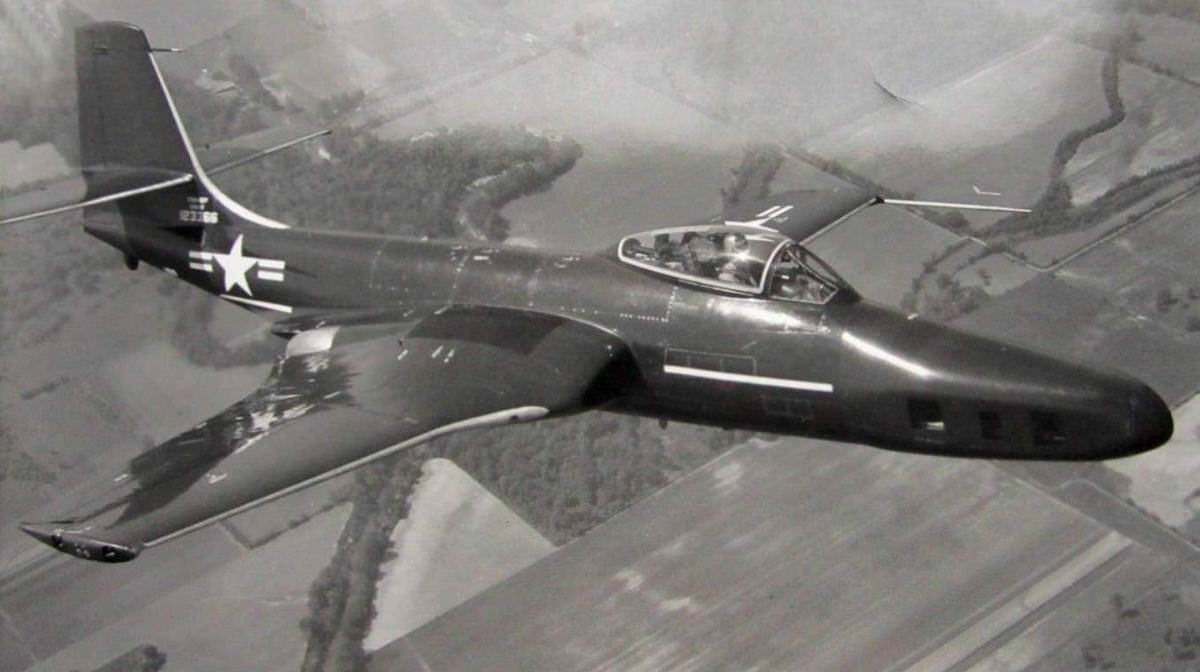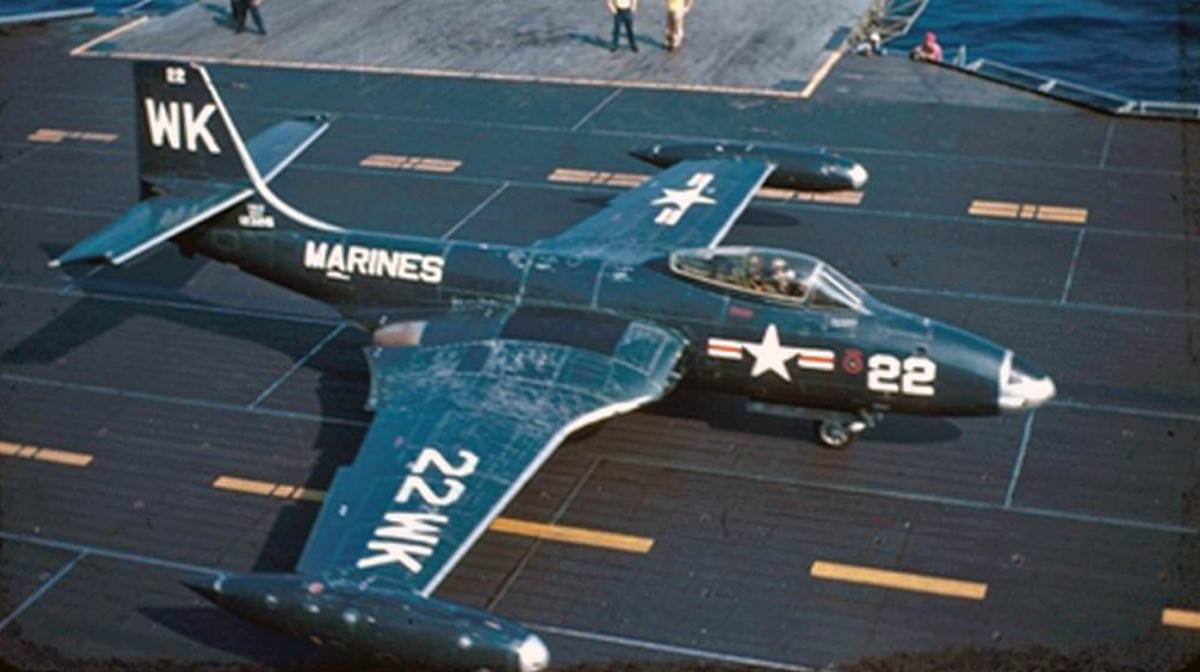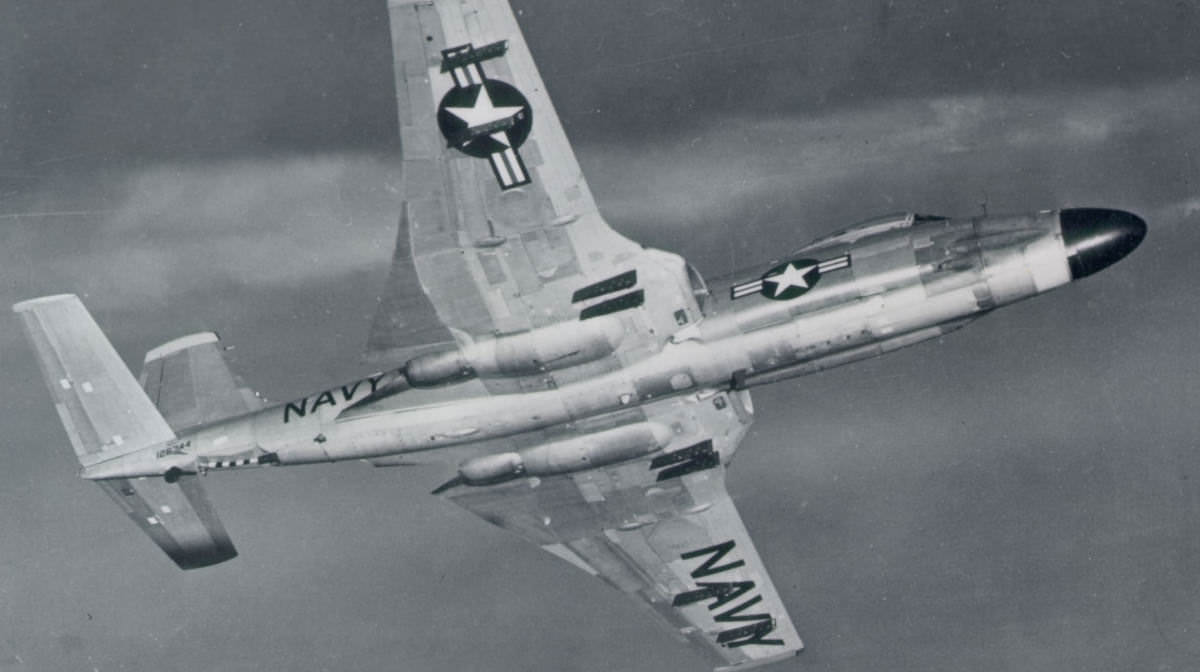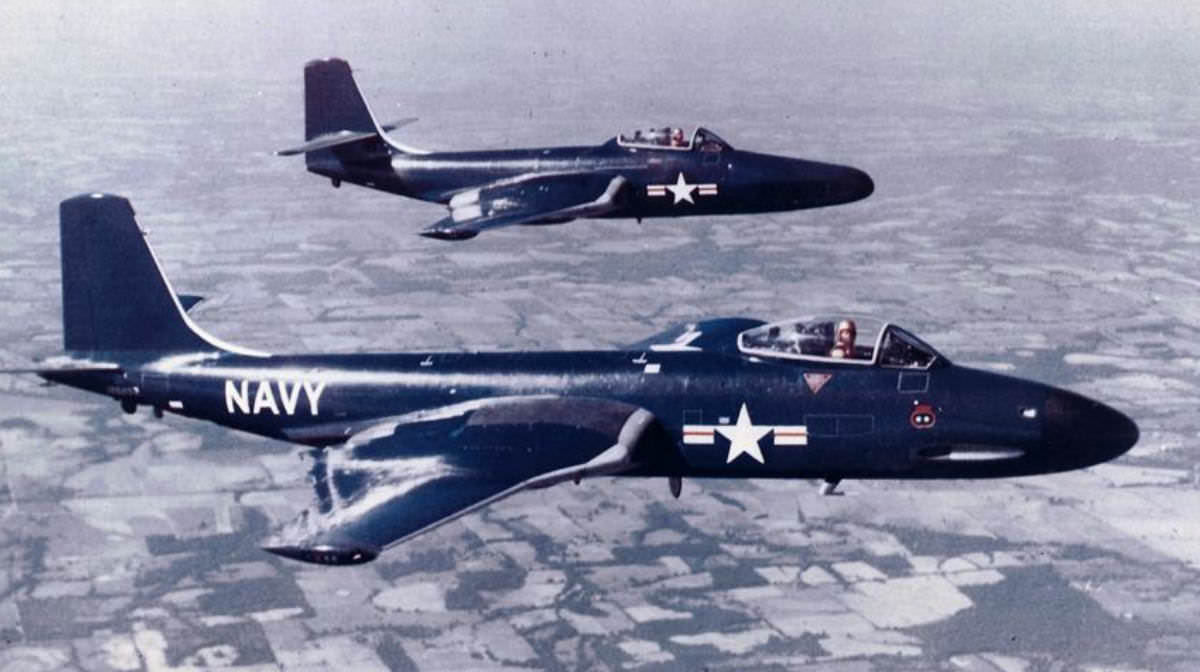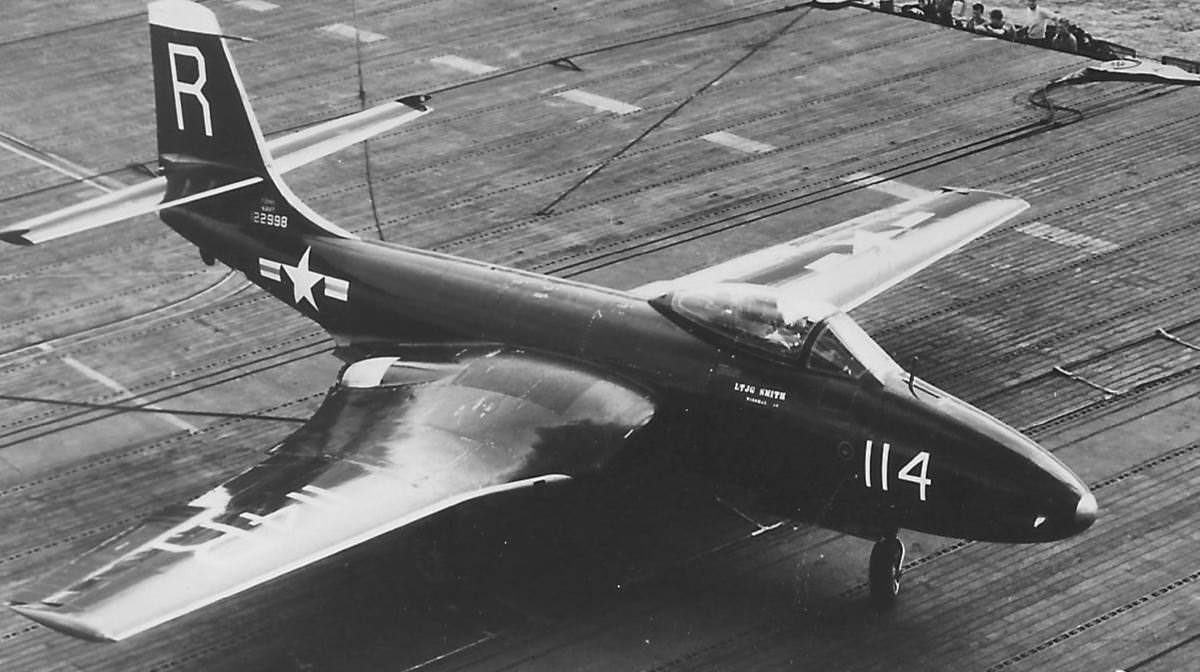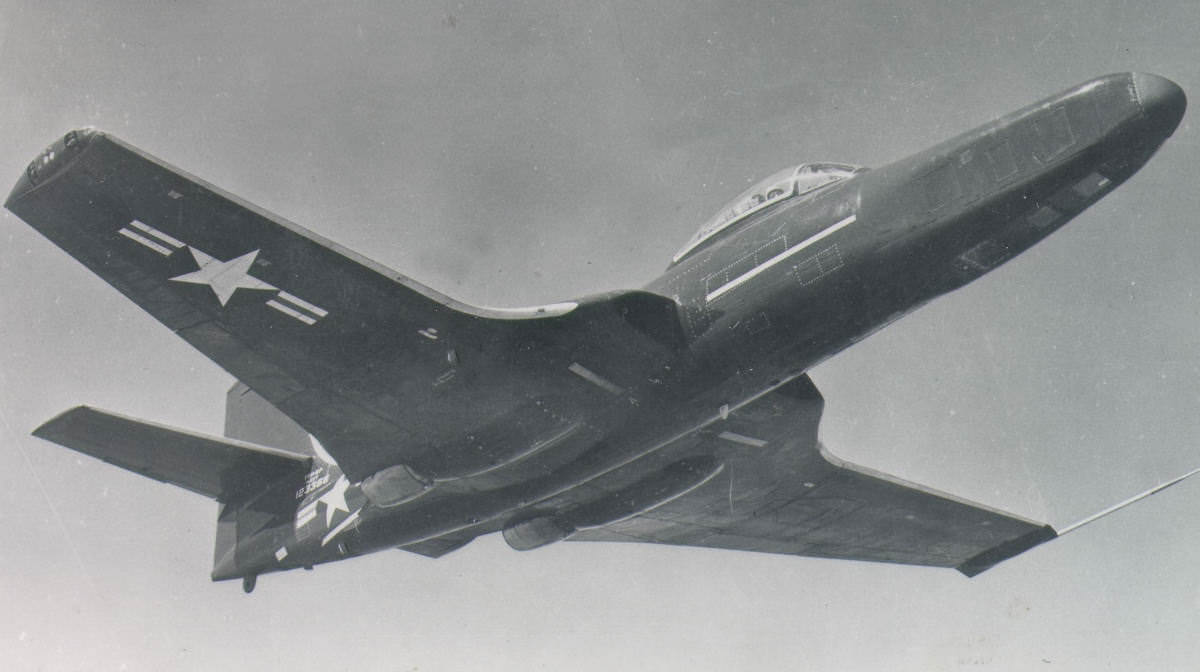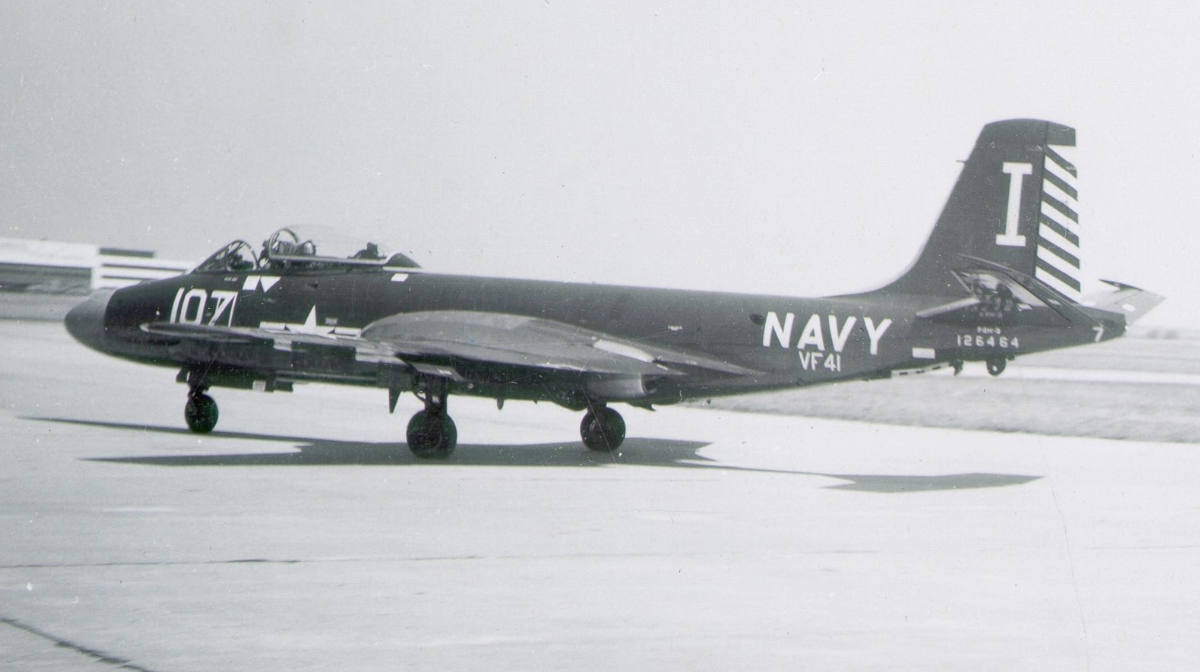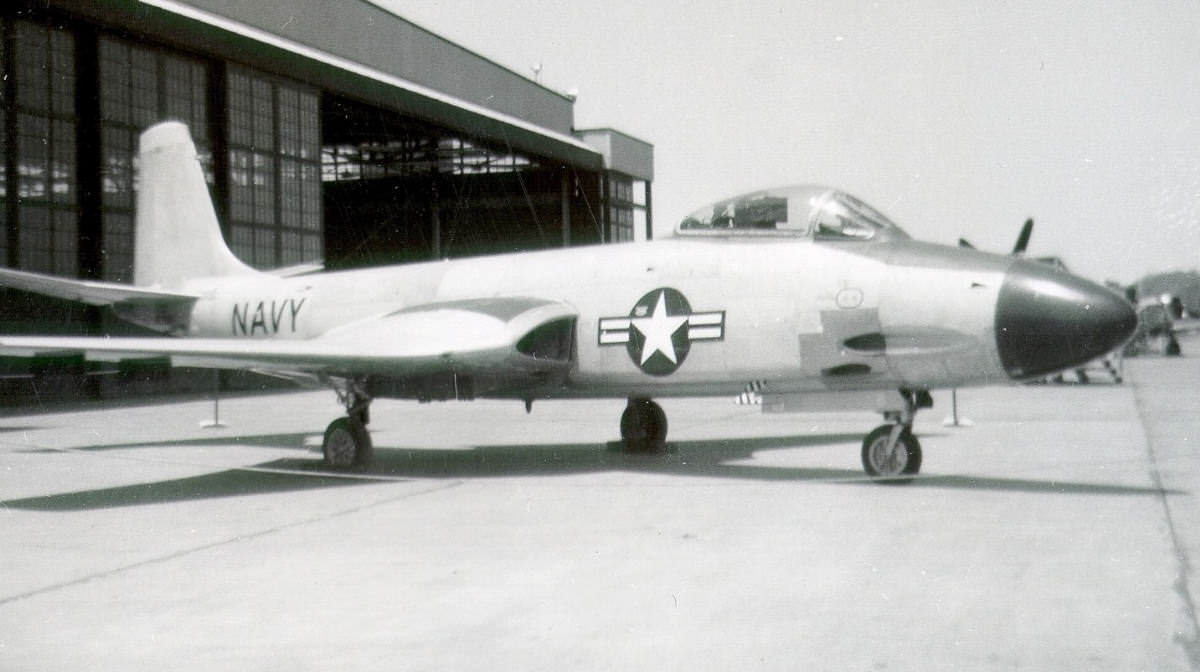Price: $24.95
- 4 magazines, 6 manuals, & photos
- PDF contains 1,430 pages
- Content is keyword searchable
- Print a personal copy
- Pay via PayPal or Credit Card
- International orders welcome!
- Download files upon payment
November 1979
- Assault Helicopters in Vietnam
- F2H Banshee
- Great Lakes – Goodbye to the Biplane Bombers
June 1987
- Carrier Borne, Part II
- EF-111 Radar Jammers
November 2002
- USS Essex: First Korean Cruise
- A-4 Skyhawk: Factory Fresh
- Wyoming Air National Guard
- DC-7 vs. Connie: Battle of the Giants
- Fabulous Fifties Issue!
November 2004
- Salute to Naval Aviation
- USS Constellation Farewell
- Blue Angels Retrospective
- WWII Catapult Aircraft – Zero to Sixty in 50 Feet
- F2H Banshee – McDonnell’s Korean War Superstar
Manuals & Photos
- F2H-1 Pilot’s Handbook 1948
- F2H-1 Pilot’s Handbook 1951
- F2H-2 -2N -2P Pilot’s Handbook 1951
- F2H-3 -4 Flight Handbook 1957
- F2H Illustrated Parts Breakdown 1955
- F2H Structural Repair Handbook 1952
- Nearly 180 McDonnell F2H Banshee photos
McDonnell F2H Banshee
F2H-3 Specifications
Variants
On Display
Videos
General Characteristics
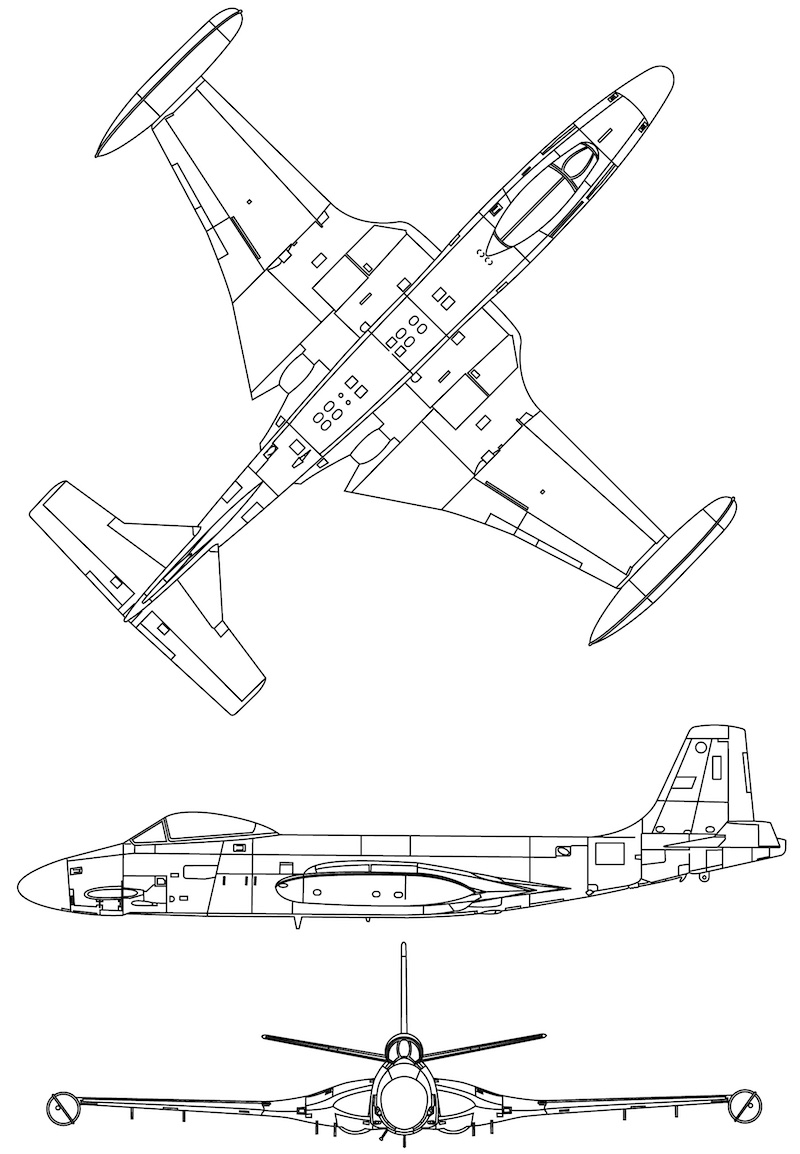
- Crew: 1
- Length: 48 ft 2 in (14.68 m)
- Wingspan: 41 ft 9 in (12.73 m)
- Height: 14 ft 6 in (4.42 m)
- Wing area: 294 sq ft (27.3 m2)
- Airfoil: wing root: NACA 65-212, wing tip: NACA 65-209
- Empty weight: 13,183 lb (5,980 kg)
- Gross weight: 21,013 lb (9,531 kg)
- Max takeoff weight: 25,214 lb (11,437 kg)
- Powerplant: 2 × Westinghouse J34-WE-34 turbojet engines, 3,250 lbf (14.5 kN) thrust each
Performance
- Maximum speed: 580 mph (930 km/h, 500 kn) at sea level
- Cruise speed: 461 mph (742 km/h, 401 kn)
- Combat range: 1,168 mi (1,880 km, 1,015 nmi) on internal fuel
- Ferry range: 1,710 mi (2,760 km, 1,490 nmi) with 2 170-gal drop tanks
- Service ceiling: 47,000 ft (14,000 m)
- Rate of climb: 6,000 ft/min (30 m/s)
Armament
- 4 × 20 mm (0.787 in) Colt Mk 12 cannon, 220 rounds/gun (upper pair), 250 rounds/gun (lower pair)
- 8 × 60 lb (27 kg) High Explosive rockets
- or 6 × 500 lb (230 kg) bombs and 2 × 60 lb (27 kg) H.E. rockets
- or 2 × AIM-9 Sidewinder missiles (in Royal Canadian Navy (RCN) service)
- XF2H-1 (XF2D-1) – Prototype aircraft (originally designated XF2D-1), three built.
- F2H-1 (F-2A) – Single-seat fighter version, two 3,000 lbf (1,400 kgf) Westinghouse J34-WE-22 turbojet engines. Initial production version, 56 built.
- F2H-2 (F-2B) – Improved version with detachable wingtip fuel tanks, eight underwing weapons pylons for 1,580 lb (454 kg) stores capability, 3,250 lbf (1,475 kgf) Westinghouse J34-WE-34 turbojet engines. Second production version, 308 built.
- F2H-2B – Single-seat fighter-bomber version, strengthened portside weapons pylon for 3,230 lb (1,465 kg) Mark 8 nuclear bomb, 25 built.F2H-2N – Single-seat night fighter version with APS-19 radar housed in lengthened nose, 14 built.
- F2H-2P – Single-seat photo-reconnaissance version with lengthened nose housing six cameras, 89 built.
- F2H-3 (F-2C) – Single-seat all-weather fighter version, lengthened fuselage, redesigned tail, increased fuel capacity, eight underwing weapons pylons for 3,000 lb (1,361 kg) bomb load, APQ-41 radar in enlarged nose. 250 built. Redesignated as F-2C in 1962.
- F2H-3P – Proposed photo-reconnaissance version of the F2H-3; not built.
- F2H-4 (F-2D) – Improved all-weather fighter version, 3,600 lbf (16,000 N) thrust Westinghouse J34-WE-38 turbojet engines, APG-37 radar, otherwise similar to F2H-3. Final production version, 150 built. Redesignated as F-2D in 1962.
- F2H-5 – Unofficial designation for unbuilt proposed swept-wing version with wings, tail and afterburners similar to those of the XF-88 Voodoo;
Canada
- F2H-3
- BuNo 126334 – The Military Museums, in Calgary, Alberta.
- BuNo 126402 – Shearwater Aviation Museum in Shearwater, Nova Scotia.
- BuNo 126464 – Canada Aviation Museum in Ottawa, Ontario.
United States
- BuNo 124988 – Flying Leatherneck Aviation Museum, MCAS Miramar, California.
- BuNo 125052 – USS Lexington Museum, Corpus Christi, Texas.
- BuNo 127693 – NAS Oceana Air Park at NAS Oceana, Virginia.
- F2H-2P
- BuNo 125690 – Pima Air & Space Museum, adjacent to Davis-Monthan AFB in Tucson, Arizona.
- BuNo 126673 – National Naval Aviation Museum at Naval Air Station Pensacola, Florida.
- BuNo 128885 – Howell Park in Baton Rouge, Louisiana.
- F2H-4
- BuNo 127663 – National Naval Aviation Museum at Naval Air Station Pensacola, Florida. Painted as F2H-3 126419.
